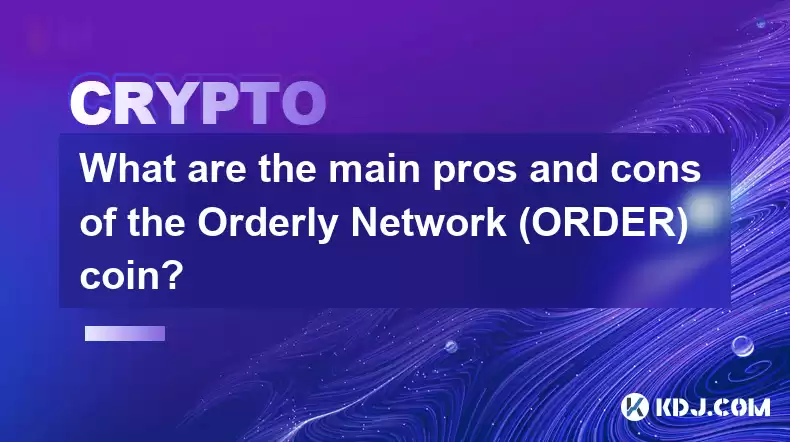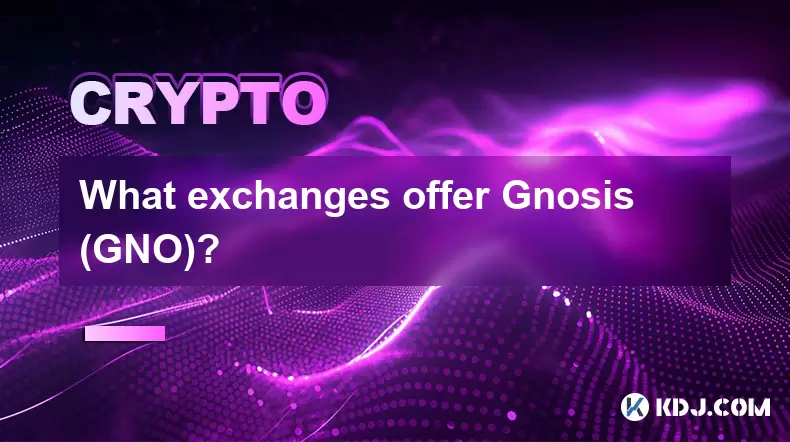-
 Bitcoin
Bitcoin $118600
-2.59% -
 Ethereum
Ethereum $4282
-0.42% -
 XRP
XRP $3.129
-4.21% -
 Tether USDt
Tether USDt $0.0000
0.01% -
 BNB
BNB $805.4
-1.80% -
 Solana
Solana $174.3
-5.77% -
 USDC
USDC $0.9998
-0.01% -
 Dogecoin
Dogecoin $0.2230
-6.33% -
 TRON
TRON $0.3466
1.70% -
 Cardano
Cardano $0.7745
-5.73% -
 Chainlink
Chainlink $21.37
-3.53% -
 Hyperliquid
Hyperliquid $42.93
-7.25% -
 Stellar
Stellar $0.4324
-4.94% -
 Sui
Sui $3.660
-7.17% -
 Bitcoin Cash
Bitcoin Cash $591.6
2.72% -
 Hedera
Hedera $0.2467
-7.04% -
 Ethena USDe
Ethena USDe $1.001
0.00% -
 Avalanche
Avalanche $22.92
-6.14% -
 Litecoin
Litecoin $118.8
-3.79% -
 Toncoin
Toncoin $3.378
-0.46% -
 UNUS SED LEO
UNUS SED LEO $9.011
-1.15% -
 Shiba Inu
Shiba Inu $0.00001294
-5.81% -
 Uniswap
Uniswap $11.24
0.53% -
 Polkadot
Polkadot $3.870
-6.16% -
 Cronos
Cronos $0.1662
-1.68% -
 Dai
Dai $1.000
0.02% -
 Ethena
Ethena $0.7915
-5.62% -
 Bitget Token
Bitget Token $4.414
-1.65% -
 Monero
Monero $259.3
-3.85% -
 Pepe
Pepe $0.00001120
-8.29%
What are the main pros and cons of the Orderly Network (ORDER) coin?
ORDER revolutionizes trading with its decentralized order book, low transaction fees, and emphasis on user data protection, empowering traders with autonomy and affordability.
Jan 01, 2025 at 05:48 am

Key Points:
- Decentralized Order Book Protocol: ORDER aims to create a decentralized order book where individuals directly trade without intermediaries.
- Token Utility: ORDER token serves as a utility token for transaction fees, staking, and ecosystem growth.
- Commitment to Data Security: ORDER emphasizes the protection of user data, allowing them to maintain ownership and control over their assets.
- Low Transaction Fees: The ORDER network charges minimal transaction fees compared to centralized exchanges, encouraging trading activity.
Pros:
1. Decentralized Order Book Protocol:
- Eliminates reliance on centralized intermediaries, reducing susceptibility to censorship and manipulation.
- Offers greater transparency and fairness as all transactions are recorded on the blockchain.
- Enhances privacy by minimizing the need for personal data sharing.
2. Token Utility:
- ORDER token has multiple use cases, fostering ecosystem growth and engagement.
- Transaction fees paid in ORDER incentivize users to contribute to the network.
- Staking rewards encourage token holders to participate in governance and secure the network.
3. Protection of User Data:
- ORDER prioritizes user data security, enabling individuals to manage their assets privately.
- Self-custodial wallets empower users to control and access their funds.
- Compliance with data protection regulations ensures alignment with legal requirements.
4. Low Transaction Fees:
- ORDER's fee structure is significantly lower than traditional exchanges.
- Reduced fees incentivize frequent trading, increasing liquidity and market efficiency.
- Cost savings appeal to traders and investors seeking affordable trading options.
Cons:
1. Limited Liquidity:
- As a relatively new project, ORDER may need time to accumulate liquidity and gain traction.
- Limited liquidity can impact trade execution speed and accessibility.
2. Market Volatility:
- The cryptocurrency market, including ORDER, is subject to volatility and price fluctuations.
- Price swings can impact investment decisions and should be carefully considered.
3. Lack of Regulation:
- The decentralized nature of ORDER means it falls outside the scope of regulatory frameworks.
- Absence of regulation poses potential risks and could hinder wider adoption.
4. Cybersecurity Concerns:
- Decentralization also introduces cybersecurity risks, such as hacking and phishing attacks.
- Users need to remain vigilant and employ appropriate security measures to protect their assets.
FAQs:
Q: What is the purpose of the ORDER coin?
A: The ORDER coin facilitates trading on the Orderly Network, powering transaction fees, staking, and ecosystem development.
Q: Is ORDER different from centralized exchanges?
A: Yes, ORDER is decentralized, eliminating the need for intermediaries and offering enhanced transparency and security.
Q: How does ORDER protect user data?
A: ORDER employs self-custodial wallets and adheres to data protection regulations to safeguard user privacy and control.
Disclaimer:info@kdj.com
The information provided is not trading advice. kdj.com does not assume any responsibility for any investments made based on the information provided in this article. Cryptocurrencies are highly volatile and it is highly recommended that you invest with caution after thorough research!
If you believe that the content used on this website infringes your copyright, please contact us immediately (info@kdj.com) and we will delete it promptly.
- Dogecoin, Presale, Surge: Riding the Meme Coin Wave
- 2025-08-12 11:10:12
- Dogecoin, Tron, and the ROI Reality Check: What's a Crypto Investor to Do?
- 2025-08-12 11:15:12
- Ethereum Layer-2 Scaling Competition Heats Up as ETH Breaks $4K
- 2025-08-12 10:30:12
- China Regulation, Stablecoins, and BNB Presale: Navigating the Crypto Landscape
- 2025-08-12 11:30:12
- Meme Coins, Investment, and Token Burns: What's Hot in 2025?
- 2025-08-12 10:30:12
- China's National Security Alarm Bells Ring Over Worldcoin's Iris Scans
- 2025-08-12 11:35:12
Related knowledge

How to purchase Aragon (ANT)?
Aug 09,2025 at 11:56pm
Understanding Aragon (ANT) and Its PurposeAragon (ANT) is a decentralized governance token that powers the Aragon Network, a platform built on the Eth...

Where to trade Band Protocol (BAND)?
Aug 10,2025 at 11:36pm
Understanding the Role of Private Keys in Cryptocurrency WalletsIn the world of cryptocurrency, a private key is one of the most critical components o...

What is the most secure way to buy Ocean Protocol (OCEAN)?
Aug 10,2025 at 01:01pm
Understanding Ocean Protocol (OCEAN) and Its EcosystemOcean Protocol (OCEAN) is a decentralized data exchange platform built on blockchain technology,...

Where can I buy UMA (UMA)?
Aug 07,2025 at 06:42pm
Understanding UMA and Its Role in Decentralized FinanceUMA (Universal Market Access) is an Ethereum-based decentralized finance (DeFi) protocol design...

What exchanges offer Gnosis (GNO)?
Aug 12,2025 at 12:42pm
Overview of Gnosis (GNO) and Its Role in the Crypto EcosystemGnosis (GNO) is a decentralized prediction market platform built on the Ethereum blockcha...

How to buy Storj (STORJ) tokens?
Aug 09,2025 at 07:28am
Understanding Storj (STORJ) and Its Role in Decentralized StorageStorj is a decentralized cloud storage platform that leverages blockchain technology ...

How to purchase Aragon (ANT)?
Aug 09,2025 at 11:56pm
Understanding Aragon (ANT) and Its PurposeAragon (ANT) is a decentralized governance token that powers the Aragon Network, a platform built on the Eth...

Where to trade Band Protocol (BAND)?
Aug 10,2025 at 11:36pm
Understanding the Role of Private Keys in Cryptocurrency WalletsIn the world of cryptocurrency, a private key is one of the most critical components o...

What is the most secure way to buy Ocean Protocol (OCEAN)?
Aug 10,2025 at 01:01pm
Understanding Ocean Protocol (OCEAN) and Its EcosystemOcean Protocol (OCEAN) is a decentralized data exchange platform built on blockchain technology,...

Where can I buy UMA (UMA)?
Aug 07,2025 at 06:42pm
Understanding UMA and Its Role in Decentralized FinanceUMA (Universal Market Access) is an Ethereum-based decentralized finance (DeFi) protocol design...

What exchanges offer Gnosis (GNO)?
Aug 12,2025 at 12:42pm
Overview of Gnosis (GNO) and Its Role in the Crypto EcosystemGnosis (GNO) is a decentralized prediction market platform built on the Ethereum blockcha...

How to buy Storj (STORJ) tokens?
Aug 09,2025 at 07:28am
Understanding Storj (STORJ) and Its Role in Decentralized StorageStorj is a decentralized cloud storage platform that leverages blockchain technology ...
See all articles

























































































